Auto review: Vanilla no more, Subaru Forester Wilderness goes wild
Published in Business News
PORTLAND, Ore. — The Forester used to be vanilla in Subaru’s delicious store of off-road flavors. No more.
My white 2026 Forester Wilderness swaggered up to the foothills of the Cascade Mountains sporting a chocolate grille, syrup-black hood decal, bold lines, chiseled rocker panels and sinewy Yokohama Geolander all-terrain tires.
Forester Vanilla just got a healthy shot of Chunky Monkey.
I nailed the throttle and the rugged ‘Ru clawed up a dirt trail flinging chocolate chips — er, gravel — behind it. To my right the trail was bordered by a sheer drop into the valley below. Forester dispelled my acrophobia. Geolander A/Ts gripped the slippery surface and we charged on while drinking in the breathtaking view.
Along with Jeep, Subaru pioneered the off-road SUV space with standard all-wheel-drive machines that can go anywhere all the time. That fundamental goodness has won over generations of fans who confess undying loyalty to ‘Ru even as other brands have begun to crowd the shelves with their own affordable off-road flavors. Badges like Toyota RAV-4 TRD, Honda CR-V TrailSport, Mazda CX-50 Meridian, Nissan Rogue Rock Creek, and, most significantly, Ford Bronco Sport Badlands.
Bronco Jr. has stomped into the segment sporting Ford’s full off-road arsenal: all-terrain tires, ubiquitous storage cubbies, sub-rear-seat storage, twin-bicycle-friendly cargo bay, twin-rear clutch packs, and a 250-horse turbo-4 mill. Go to the head of the class, Sport.
Curiously, the Jeep Cherokee didn’t show up for the popular compact segment in model years 2024-25 — and Forester Wilderness is jumping in with all fours.
If the subcompact Crosstrek looks like a running shoe and the midsize Outback is a hiking boot, the Forester has been a ... shoebox.
Square, tall and roomy, it lacked the personality of its teammates even as it offered excellent all-season utility, interior ergonomics, even a sippy hybrid model. The Wilderness edition brings the wardrobe to match its off-road capabilities. I mean, just look at those bronze tow hook/roof rail highlights and Wolverine-like front fascia lamb chops that complement its big claws.
Those claws are assisted by a front skid plate to protect the jaw, and a 9.2-inch ride height so I could sail over pointy rocks and splash across creek beds.
Those athletic attributes outside are mirrored with digital tech inside. I kept a window open in the digital instrument display to monitor tire pressure (35 pounds) as I charged across the rocky landscape. Get a flat tire? A handy spare is right underneath the rear hatch.
Never mind off-roading out West; I’d recommend the Forester Wilderness as a daily driver for Metro Detroit, where the always-under-construction roads can feel like the Cascade trails. WHUMP WHUMP WHUMP! How many low-profile wheels have I scarred across Motown’s lunar landscape? Better to have tall-sidewall Geolanders at the ready. WHUMP WHUMP WHUMP!
Inside this little tank, Subaru has created a sanctuary from the mayhem outside.
Product chief Bill Stokes and his Jersey-based elves have outfitted Wolverine with gritty all-terrains that are quiet as a mouse in daily driving. How? By designing a new chassis from the ground up, with the Wilderness bruisers in mind — more welds, isolated wheel wells, cabin soundproofing.
On the way back into Portland from the Cascades — the Forester Wilderness caked with dirt ‘n’ dust — I sat in the back seat while a colleague took the wheel and quickly forgot this was an off-roader while catching up with email and texts.
Forester’s rear couch is palatial, a nice upgrade from Crosstrek, which is no slouch in the subcompact rear-room department. The big difference between the siblings is the front seat, however, as Forester affords a lot more headroom thanks to its upright A-pillar. Crosstrek looks like a running shoe thanks to its sloped S-pillar (as does hatchback cousin Impreza). The compromise is less headroom for giraffes like me.
That explains the Forester shoebox.
Forester Wilderness brings its off-road mission to the interior as well. Door storage is designed with tall water bottles in mind — the door armrests abbreviated so you easily slip in tall flasks. I recently piloted an off-road-focused, $52K Hyundai Palisade XRT-Pro to New York and back and struggled with its shallow door storage.
The Subie’s rear door inserts are similarly thoughtful. For its sixth gen, the center console has been redesigned for better storage: seat heaters are now in the screen, cupholders enlarged, the front phone charger more accessible. That phone charger — standard on all Foresters — is more important than ever as passengers use their phones’ Google Maps to navigate to the far reaches of, say, Oregon. Or Michigan.
Also standard is the 11.5-inch vertical screen, now common to Subies across the lineup. With its big graphics and complementary buttons for volume and climate control, it is easy to navigate. Even better is the steering wheel (highlighted by a bronze insert so you know it’s a Wilderness model), which is smartly designed with raised volume and adaptive cruise controls so you never need take your eye off the road. Or off-road.
This being a performance-focused Forester, Subaru has outfitted it with shift paddles behind the wheel should the droning automatic transmission ever drive you nuts. I found the paddles as useful as shoes for a fish. Armed with 178 pound-feet of torque and 180 horsepower, Forester’s 2.5-liter flat-4 engine has a tall task.
That task includes competing with the Bronco Sport Badlands, which brings significantly more capability. Its shift paddles are actually fun given the Badland’s substantial 280 pound-feet of torque and more sophisticated eight-speed transmission. Feel adventurous? Take the Bronc Jr. to Holly Oaks ORV Park in Holly and it will do doughnuts in the sand thanks to its rear twin clutch pack. Ooooooh.
That’s some serious off-road cred from the Ford. Heck, the Subie’s 180 horses are just enough to keep up with the base Bronc’s 180-horse turbo-3. The Sport Badlands' 250-horse turbo-4 is in another league.
Which is here the Forester’s upgraded curb appeal is so important. It looks like a proper Subie dirt-kicker to go with its more affordable sticker — a meaningful $2,500 cheaper than the Ford. That, and it tows 800 pounds more than the Ford, expanding the Ru's demographic. Subaru opened the door to compact SUV off-road capability, and Ford has rushed in. So will the Jeep Cherokee as it returns to market over the next couple of years with a trail-focused variant.
Rugged looks, off-road utility, towing, and ... oh, yes, there is one more ‘Ru feature Forester is counting on: reliability. With a top rating from Consumer Reports, it boasts better grades than segment classmates.
Reward that ‘Ru with a Chunky Monkey ice cream.
2026 Subaru Forester Wilderness
Vehicle type: Front-engine, all-wheel-drive, five-passenger SUV
Price: $42,035, including $1,450 destination fee
Powerplant: 2.5-liter inline-4 cylinder
Power: 180 horsepower, 178 pound-feet of torque
Transmission: Continuously-variable automatic
Performance: 0-60 mph, 8.0 seconds est. (Car and Driver); towing, 3,500 pounds
Weight: 3,675 pounds
Fuel economy: EPA, 24 mpg city/28 highway/26 combined; range, 465 miles
Report card
Highs: Rugged looks; appealing interior
Lows: Lacks performance, interior features lag competitors
Overall: 3 stars
____
_____
©2025 www.detroitnews.com. Visit at detroitnews.com. Distributed by Tribune Content Agency, LLC.
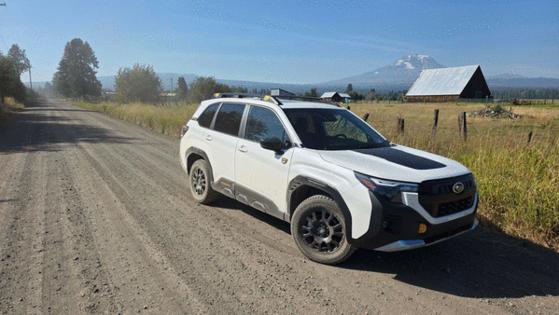
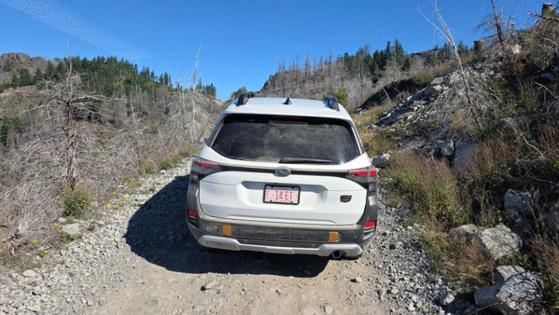
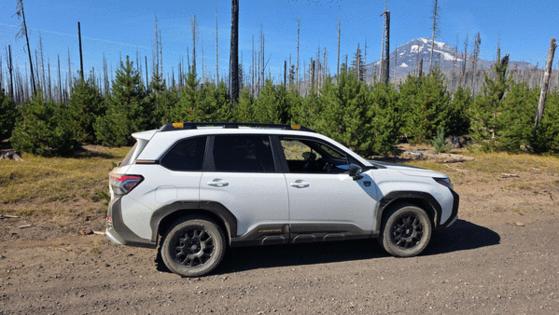
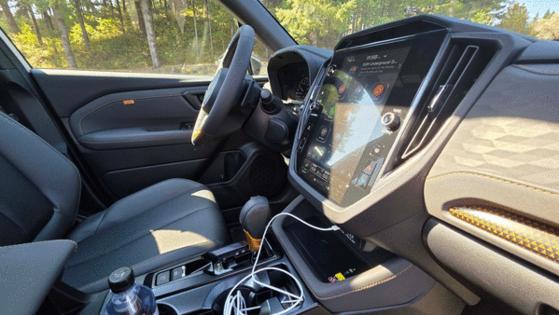
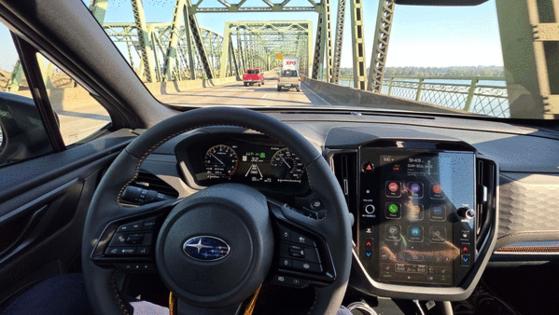
















Comments